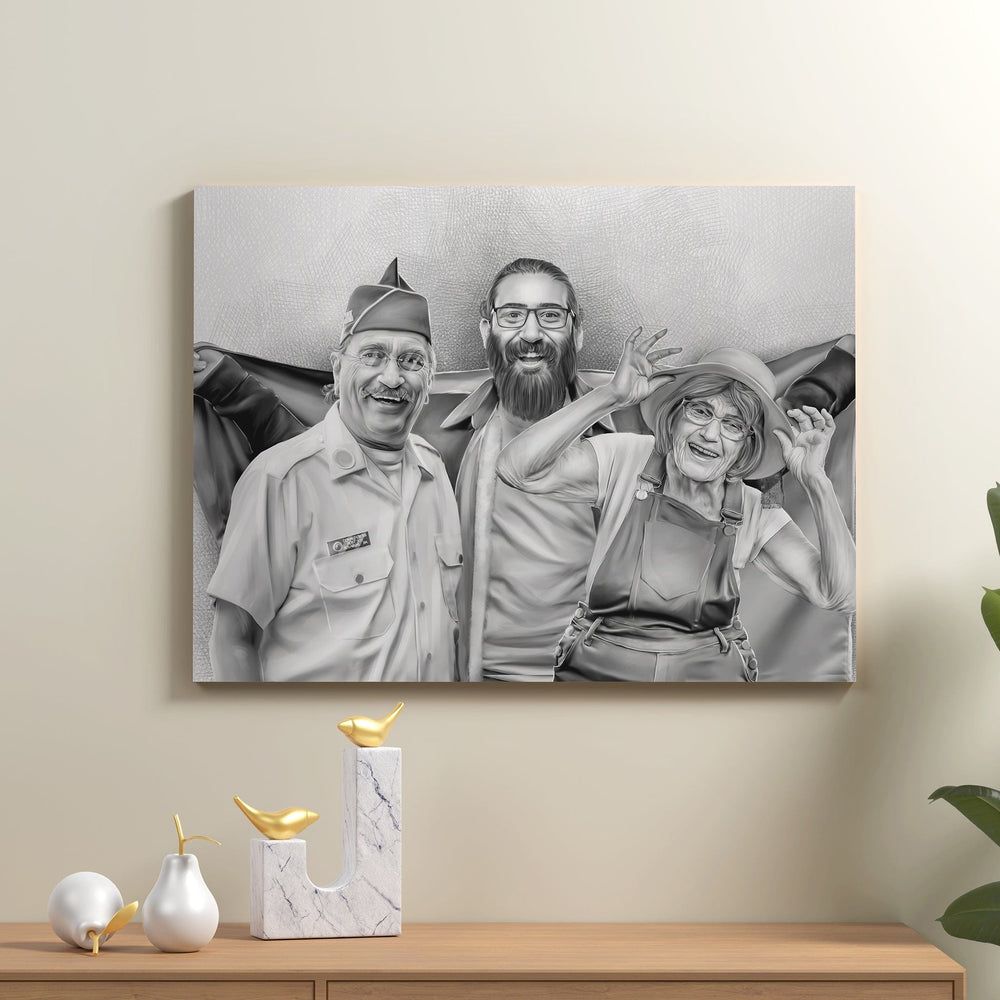How to Clean an Oil Painting without Damaging It


Artworks are considered prized possessions. An oil painting should be kept clean and as good as new, whether a garage sale finds, a part of your inheritance, or a collector’s piece.
Oil paintings are also eligible for depreciation, and preserving it can be beneficial in the long run. However, keeping a good image of the painting requires a little effort in preserving and cleaning. It is essential to remember that how to clean an oil painting may require the best and most delicate effort.
There are advantages if you know how to clean a canvas painting or you know how to dust an old painting. You may sell it with a slight difference in how much you bought it or sell it higher than its depreciated price.
Why Should You Clean Oil Paintings?

If you haven't figured it out, cleaning an oil painting can prevent it from looking dull, faded, or aged. As time passes, dirt and unwanted layers build up your oil painting. If this isn’t cleaned up immediately, the dirty layer may build up, which can be a larger problem in the future, especially for antique oil paintings.
It May Lead to Discoloration and Aging
Though professional oil painting cleaners should do this job, you can clean an oil painting on your own. However, you need to make sure you have the patience to do it. Otherwise, you are risking the quality of the painting, and you are just wasting your time. But once you have done it, the oil painting will keep its vibrant colors, just like how the artist did it in the beginning, preserving the vibrancy in oil paintings.
Dust is Stubborn
Wherever your artwork is stored or even if you have kept it in appropriate storage, it is most likely to accumulate dirt at a rapid pace. It may have a devastating effect on oil painting. As we know, oil paintings are not covered by anything.
Prevent and Remove Varnish Discoloration
Over time, the varnish layer on oil paintings can become yellowed or discolored. Careful varnish removal, a part of the cleaning process, helps restore the painting’s original clarity and depth. This aspect is vital in both valuable and non-valuable oil paintings, as it affects the overall visual impact.
Encourage Proper Preservation Practices
Cleaning oil paintings is not just about the act itself but also about encouraging proper preservation practices. Using the right cleaning tools, such as a soft-bristled two-inch paintbrush or high-quality cotton swabs, and knowing the method of cleaning are part of responsible art ownership.
Enhance the Value of Antique Paintings
For collectors and owners of antique oil paintings, regular cleaning is a crucial aspect of maintaining their value. A well-preserved classical painting or a family painting with historical significance can see its value appreciated over time. Using professional oil painting cleaners or adopting the correct cleaning method is essential to achieve this.
How To Clean Oil Painting

Oil paintings are timeless pieces of art that require careful maintenance to preserve their beauty and value. Cleaning an oil painting is a delicate process that involves specific techniques and materials. Here's a comprehensive guide on how to clean an oil painting, integrating relevant keywords to enhance understanding and effectiveness.
Assess the Painting
Before beginning the cleaning process, it's crucial to assess the condition of your oil painting. Check for any signs of damage to paintings such as cracking, flaking, or a dirty varnish layer. If the painting is a valuable painting, like an antique oil painting or a high-value painting, consider consulting a professional oil painting cleaner.
Remove Dust
This is the easiest way to keep your oil paintings looking vibrant. You don’t need an oil painting cleaner to clean it effectively. Looking for a home remedy for cleaning oil paintings? You only need household items, such as freshly baked bread, a soft toothbrush, or paintbrush.
Just gently store it with a soft touch if you use a brush or a slice of bread and dab it on the painting. Should there be bread debris, just brush it off with a soft toothbrush or a paintbrush.
Choose the Right Cleaning Agent
For non-valuable oil paintings or those in stable condition, a mild olive oil-based soap diluted in water can be used. For more delicate works, specially formulated art cleaning products are recommended. Avoid harsh chemicals that can lead to damage to paintings.
Gentle Cleaning
Using a soft cloth or fine-haired paintbrush, apply the cleaning solution gently to the painting. Start from the top and work your way down, using minimal slight pressure to avoid unnecessary pressure on the painting's surface.
Deal with Stubborn Grime
For stubborn grime or built-up grime, a fresh cotton bud or high-quality cotton swabs can be used. Be extra cautious and apply slight pressure to avoid damaging the brush strokes or the texture of the painting.
How To Care For Your Oil Painting

Whether it is a reproduction or an original painting, you should know how to clean an oil painting. Unlike watercolors, oil paintings are prone to deterioration and scratches.
Place It Away From Humid Areas
Transport It With Care
Place It Where Smoke Is Minimal
Frequently Asked Questions
What should never be used to clean an oil painting?
What are available solvents for cleaning oil paintings?
How often should oil paintings be cleaned?
Can I clean the oil painting myself?
How much does it cost to have an oil painting cleaned?
The cost of having an oil painting cleaned by a professional varies widely, depending on factors like the painting's size, condition, and the complexity of the work needed. Typically, rates can range from $100 to $250 per hour. For valuable paintings, especially those requiring delicate handling like antique oil paintings, the cost can be higher due to the need for specialized skills and professional cleaning methods. It's always best to get a detailed estimate from a conservator or professional cleaner before proceeding, as they can assess the specific needs of your painting and provide a more accurate quote.
Oil Painting Alternative
If you're someone who struggles to keep their oil paintings clean and free of streaks, then you may want to consider investing in a watercolor portrait. While they do require a bit more careful handling than your average painting, the results are often worth it.
Watercolors allow for a much greater degree of realism and detail than traditional oils, and because the paint is applied in thin layers, the finished product has a much more airy feel about it. Not to mention, watercolors are perfect for capturing the subtleties of light and shadow that can be so difficult to capture with oils. So if you're looking for a realistic portrait that really captures the character of the subject, you should definitely consider ordering a watercolor portrait.
Moreover, watercolor paintings, with their matte surface, don't require the outwards pressure and excessive pressure during cleaning, unlike original oil paintings where a dry paintbrush or soft-bristled brushes are needed to clean surface dust. The growth of a watercolor portrait over time is also less prone to issues like layer of varnish buildup or surface dirt, often seen in oil paintings displayed over time.

Final Thoughts
Do you want to keep your memories in a painting or surprise someone with a thoughtful gift? Visit Memorialize Art and order a painting now. ur talented artists will turn your snapshots into stunning paintings that you'll treasure forever. So don't settle for an ordinary gift this year - give a work of art that celebrates the special people and moments in your life.










